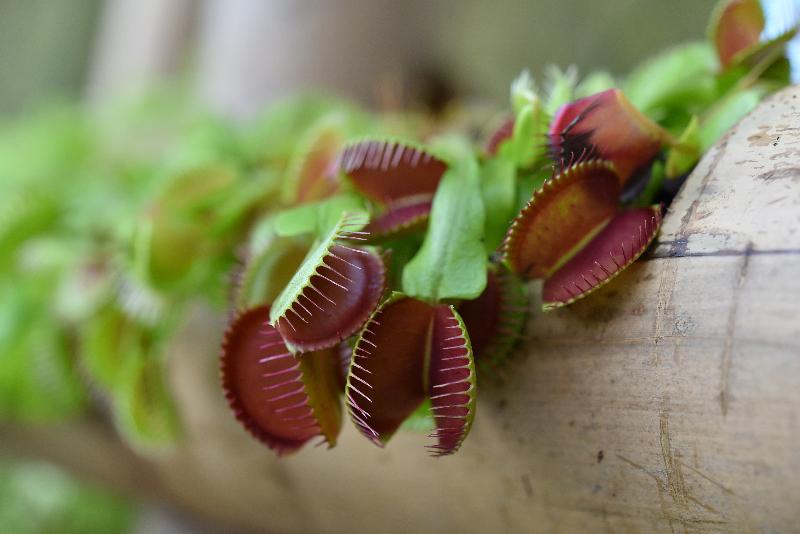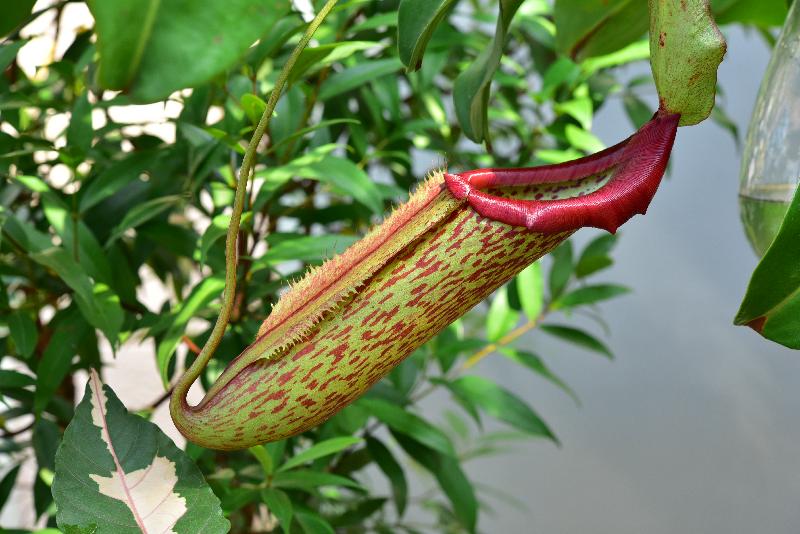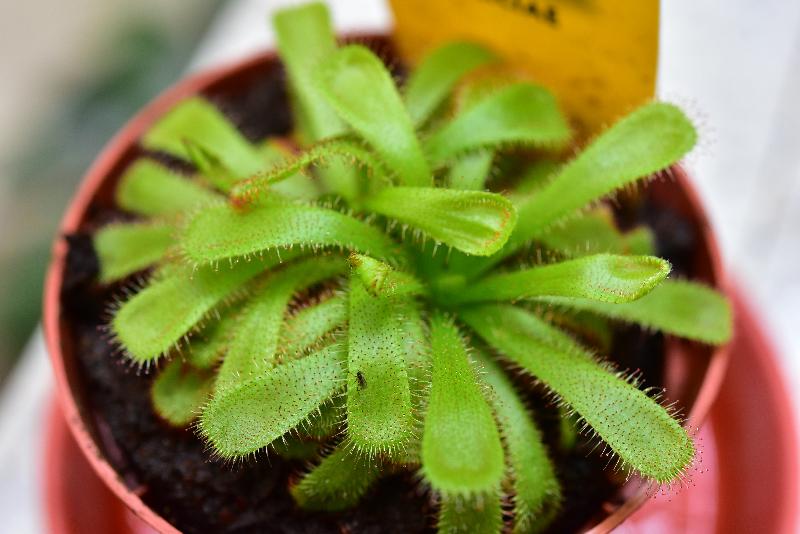Carnivorous plants are unique and different from other plants in their shape and ability to capture insects and small animals. Members of the public will have a chance to take a closer look at the different species at the Carnivorous Plant Exhibition to be held from December 1 (Sunday) at the Display Plant House of the Forsgate Conservatory in Hong Kong Park under the Leisure and Cultural Services Department (LCSD).
With about 600 species, carnivorous plants are mainly distributed over tropical and subtropical regions and classified into four categories, namely Venus fly-trap, pitcher plant, sundew and bladderwort, according to their trapping methods, mechanism and techniques. The plants are able to obtain nutrition from a prey which they lure, capture and decompose. A rich variety of about 500 carnivorous plants will be showcased at the upcoming thematic exhibition.
The two clam-like lobes of a Venus fly-trap's leaf snap shut when the very sensitive hairs are touched more than once. The entrapped prey will be decomposed by the digestive enzymes secreted by the glandular hairs on the leaf surface.
Pitcher plants possess pitchers grown at the end of the leaf tendril, and wait for prey to fall into their traps. The inner rim is lined with glands, which secrete honey or nectar to attract insects. When an insect lands on the slippery rim, it will be prone to fall into the pitcher.
Commonly seen on grassland and sandy soil, the Sundew secretes glistening sticky droplets from the tip of the red stiff glandular hairs on the leaf surface. When an insect lands on the leaf surface, it will be caught by the peripheral glandular hairs. The hairs then move slowly to enable a firmer grip of the prey.
Aquatic bladderwort possesses submerged bladders for catching prey with several trigger hairs growing outside of a trapdoor. When a small creature touches the hairs, the trapdoor is triggered to open inwards and suck the prey in. The plant then secretes enzymes to digest the prey.
In addition to the presentation of over 50 species of carnivorous plants, display boards will also be set up to introduce their characteristics and cultivation methods. Park-goers are invited to visit the exhibition, which will be open to the public free of charge from 9am to 5pm daily from December 1 to January 12, 2020 at the Display Plant House of the Forsgate Conservatory of Hong Kong Park, 19 Cotton Tree Drive, Central.
To further enhance the public's understanding of carnivorous plants, two sessions of guided tours will be held at 11am and 3pm every Sunday from December 1 to January 12 next year. Each tour will last for an hour.
For details, please browse the LCSD website.
Follow this news feed: East Asia








